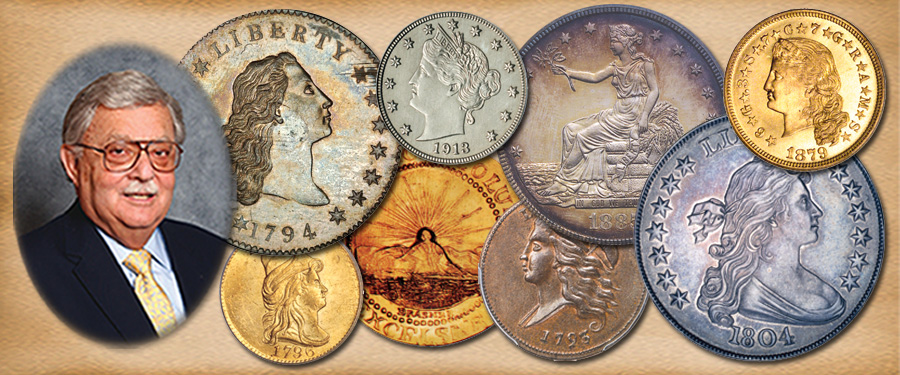
In this article I continue my thoughts on rarity by stating that you cannot make a rarity and trying to create a rarity usually results in failure. Trying to manipulate supply and demand rarely ends well for anyone involved. This is especially true if one attempts to do this as a means to control the market for personal gain and not with the goal of owning and enjoying a coin or other collectible.
I would like to share what happened while I was serving R.L. Miles, Jr., of Norfolk, Virginia – how he started collecting, how he concentrated on the hobby, and how he singlehanded created a shortage of certain dates of Proof Barber half dollars.
R.L. Miles, known as "Skinny" during his youth due to his height and thinness, started collecting when he was in his early teens as a cashier in his family’s business, J.H. Miles, & Co., owners of one of the largest oyster farms on the East Coast, employing some 1,000 shuckers. As he went through change he found many interesting coins for his collection and set aside different dates from cents to half dollars. He had an advantage similar to what a cashier in a bank might have, or a toll taker. If he found a coin he did not have, he placed it into his album and if he found a better one he exchanged it. His collection was assembled during the three decades following World War II.
As he grew up, and was active in running the family company, he continued collecting. Additionally he had a "private hobby," seeing how many Proof half dollars of 1914 and 1915 he could assemble. He had developed a fascination with Barber half dollars. He found them occasionally in his change, but not like later date coins. He did fairly well filling out his collection, but became aware that 1914 and 1915 half dollars just did not show up. Checking Mint records he learned that around 100,000 were made each year in Philadelphia for circulation (the lowest number of a date and mint of the series), and only 380 Proofs in 1914, and 450 Proofs in 1915. “They have to be scarce or rare,” he thought. He went on to bid on and buy many of these Proof dates as they appeared in auctions across the country. He had the financial resources to buy duplicates and found it challenging to see how many he could find. Eventually he amassed over 250 of each date in Proof condition.
His coin collection provided him with much enjoyment and as a director of the Virginia National Bank in Norfolk, he placed his collection on display so that the public, including collectors and schoolchildren, could appreciate it, learn from it, and maybe take up numismatics themselves.
After a quarter of a century of dedication to his collection, he decided to offer it for auction through Stack’s one of the dealers he liked. When his vast collection of U.S. gold, silver coins, from 1793 to 1970 re-entered the market, his accumulation of Proof 1914 and 1915 half dollars also crossed the auction block. However, while the price had gone up for these items while he held them, the appearance of so many on the market caused a drop in price, not down to the price of other Proof Barber half dollars, but close.
So, Skinny’s attempt to hoard Proof half dollars of these dates was not necessarily rewarding financially, although it seemed to be an enjoyable challenge to undertake. There were not enough collectors interested in this particular specialty at the given time to significantly increase the demand or to absorb Mr. Miles’ “supply” at the higher price level. But, the balance of the vast R.L. Miles Collection, systematically assembled over the years, brought him great financial reward. He told me that he had learned his lesson: that market forces are market forces and cannot be arbitrarily controlled.
When you have been involved in numismatics as long as I have, you get to see many things. This is not the only attempt at hoarding that occurred in the coin market place over the years. I will continue my reminiscences about rarity in my next article.





